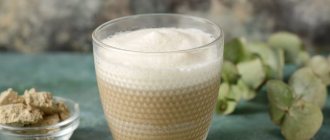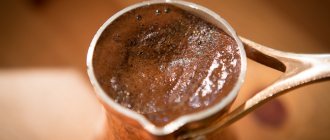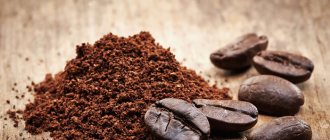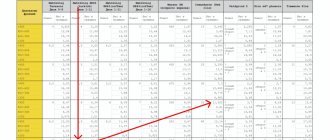How to choose the right coffee grinder?
Since it is important what to grind your coffee in and what coffee grinder to use, we will try to give you some tips. There are several types of this device on sale.
- Knife.
- Millstone.
- Manual.
Most models are made according to the knife grinding type. Coffee beans are crushed using sharp knives, which operate at high speed during operation. The degree of grinding can be adjusted based on the operating time of the machine. The longer the coffee grinder runs, the finer the beans will be ground. Users often complain about uneven grinding. This occurs due to the small capacity of the knives, only 120 ml.
In a burr-type machine, the knives will do their job like a mill, grinding the coffee beans into a homogeneous mixture. The degree of grinding primarily depends on the distance at which these knives are located. This type of coffee grinder is capable of grinding no more than 300 g of beans in one go. Such “mills” have a reservoir for the finished grinding.
The good thing about manual coffee grinders is that you can independently regulate the amount of fresh grinding. It provides for the arrangement of two knives. One is attached to the very bottom and the other to the rotating inside of the handle. With this kind of grinding, it is impossible to spoil the coffee, namely, to burn it with great power.
The execution process is simple. You need to add the required amount of coffee beans and perform rotating movements for 20 minutes. This coffee grinder has a special container into which the finished powder comes.
Making changes to the grinder settings
A coffee grinder has a pair of blades called burrs, the top of which can be adjusted to change how coarse or fine the ground coffee becomes.
Since each coffee has its own specific tendencies and therefore its own sweet spot, it may take a little trial and error to find that sweet spot.
The question of “how to properly adjust the grind on a coffee grinder” and making changes to the grinder settings can be a daunting prospect, however, contrary to many misconceptions, it is actually not such a difficult procedure.
Proper grinding of beans determines the aroma and quality of coffee as a drink. Each type of coffee contains beans of different sizes and densities, and after roasting their moisture level continues to change. The quality of grinding is also affected by changes in environmental factors: humidity, pressure and ambient temperature.
The percentage of air humidity, indoor and outdoor temperatures, and atmospheric pressure levels change throughout the day. Therefore, when adjusting the grinding in a coffee grinder, you need to take into account the season (heat, cold, snow, wind, dryness or rain), room heating, even the operation of the air conditioner and humidifier.
As air humidity increases, coffee granules begin to swell, pressing closer together. This factor increases the extraction time of the coffee, making it bitter. Due to low humidity, on the contrary, the opposite effect occurs: the distance between the granules increases, the coffee cooks faster, reducing the density, and the taste of the drink becomes sour. If the grind is too fine, the coffee will be bitter. Coarse grinding produces watery and unsaturated coffee, and the cream will form a very thin layer.
In this regard, when air humidity increases, you need to change the grinding of the coffee grinder. When indoor humidity increases, the grind needs to be coarser. Otherwise the coffee will become bitter.
With a decrease in air humidity, an unpleasant sourness appears in the drink, as coffee beans lose moisture, the distance between particles becomes greater, and the time for extracting useful substances is shortened. Therefore, the grinding needs to be changed to a finer degree.
We should also not forget about the freshness of the coffee beans and the service life of the coffee grinder, where the millstones have their own expiration date. Worn millstones will produce uneven grinding. Coffee grinder blades need to be changed once a year.
Features and types of coffee grinding
The degree of grinding of coffee beans depends on what kind of drink you plan to prepare. After all, the same grind is not suitable for every drink. You can get the desired grinding consistency depending on how long the “mill” runs.
Kinds:
- Large . With this type of grinding, the ground coffee particles are approximately 0.8 millimeters in size. To get it you need to time 10 seconds. This type of coffee is best immersed in drip coffee makers. You should start the grinding process 8 minutes before cooking.
- Average . To obtain this type of grinding, you need to time the operating time of the device within 13 seconds. You need to use coffee within 6 minutes so as not to lose the existing qualities and coffee oils. This type of coffee can be used in all types of coffee makers.
- Small . To get such a grind, you need to keep the coffee grinder running for about 20 seconds. The powder must be used no later than 4 minutes after mechanical treatment. Perfect for carob coffee makers.
- Espresso . This grind type is suitable for coffee makers with an espresso function.
- Superfine . In another way it can be called crushed grains “to dust”. You need to grind for 30-40 seconds. Suitable exclusively for making Turkish coffee or brewing in a thicket.
When to change your coffee grinder grind settings
The coffee grinder grinding settings must be changed in the following cases:
- When changing the type of coffee
- When environmental conditions change: air temperature, humidity level or atmospheric pressure.
- If the coffee grinder blade is worn out.
Coffee grinders never produce a completely uniform grind. Ground coffee will always have larger particles and dust mixed in. To obtain a more or less uniform grind, the ground grain must be passed through a metal sieve of the required diameter. This separates particles that are too large and too small.
Other ways to get coffee beans ground
There are cases when anyone can find themselves without a coffee grinder, and it is not possible to grind beans mechanically. At such times, other kitchen appliances will do.
- Kitchen blender with bowl.
- Food processor.
- Immersion kitchen blender.
In addition to mechanical methods, manual methods can be used. You need to be patient and strong.
- Grind the coffee beans using a mortar and pestle.
- Crush the grains using a large flat knife and cutting board.
- Grinding grains using a rolling pin, a bag and a board.
- Crushing grains using a hammer, bag and cutting board.
- Grind the grains in a manual meat grinder.
Grinding adjustment algorithm
Typically, espresso brewing takes about 25 seconds, so if you don't hit that mark consistently, you'll need to make some adjustments to your grinder settings.
To change settings, follow this simple step-by-step guide:
First, determine whether you need to make the grind finer or coarser.
The grinding on a coffee grinder is adjusted using a disk located under the hopper, that is, a container for storing coffee beans. To obtain a finer grind, only when the device is turned on, the disk is rotated towards the FINE inscription. To make a coarse grind, turn the dial towards the inscription COARSE (GROSS or GROSSA). This is possible with the coffee grinder turned on and off.
- You need to move the disk ring one mark at a time in the appropriate direction.
- First, turn on the disc for ten seconds so that no particles from the previous grind remain.
- Make a test espresso, remembering to keep your dose and tamping technique the same to eliminate any other variables.
- Estimate how long it took to brew this espresso.
- Was the coffee brewed for the optimal time and what does it taste like?
- Repeat if necessary.
Remember that when changing the spacing of the burrs, you must do so in very small increments.
Even three millimeters of movement of the dial can change the extraction time of the coffee by about three to five seconds, so you shouldn't make major changes unless you feel the need to.
Once the best result is found, write down the settings. It's worth writing down because you can use them as your default setting.
Temperature and changing conditions during the working day can sometimes affect the nuances of the coffee, so regular “espresso checks” are suggested to ensure ideal settings are always being used.
Useful tips
- It is best not to store ground coffee, but if there is some unused powder left, it is best to place it in an airtight container and place it in a dark place where there is no moisture. A great option would be a refrigerated space.
- When buying a new “mill” it is best to purchase a millstone. It will be the most versatile and easy to manage.
- Even if it is not possible to buy a coffee grinder, you can always grind the beans in professional coffee sales departments.
What are espresso checks
Before you start changing the settings of a professional coffee grinder, you need to grind the coffee beans for one serving and prepare espresso, measuring the extraction time. If it took less than 22 seconds, then the grind is coarse, if it takes more than 28 seconds, then it is fine.
To determine the quality of the grind, you will need an accurate scale and a stopwatch to determine the coffee extraction time.
To change the grinding settings of the coffee grinder, you need to grind coffee beans for one serving and prepare espresso. In this case, you need to record the time from the moment the espresso is turned on until it ends. If it took less than 22 seconds to prepare the drink, then the grind is coarse; if it takes more than 28 seconds, then the grind is fine.
The ideal extraction time for espresso is 25 seconds. Deviations from the ideal according to specialty coffee standards are ±3 seconds and ±3 ml; ±5 is acceptable in commercial standards. Great if you measure temperature and TDS, but much better if you can judge the appearance and taste of espresso like a pro.
A moment of history
Already in the 18th century, Europeans adored freshly brewed natural coffee, but did not use Turks to prepare it. Then it was believed that the boiling process could affect the taste of the drink, so a popular method for preparing this drink was in which the ground grains were simply poured with hot water and thoroughly infused in a coffee pot. For filtration, a linen bag was used, which played the role of a modern paper bag and did not allow particles of grounds to fall into the cup.
However, in the 19th century, the methods of preparing coffee changed greatly. Coffee makers of various designs appeared and the previous fashion was practically forgotten. But, of course, there were also dedicated gourmets who continued the ancient traditions, brewing ground grains directly in a cup, which made it possible to better reveal the taste of the drink and transmit subtle aromas.
In the 90s of the last century, the fashion for brewing coffee in a cup returned again. The old method is used by ordinary people who are fed up with instant coffee, but do not want, or do not have the opportunity to use a coffee maker.











